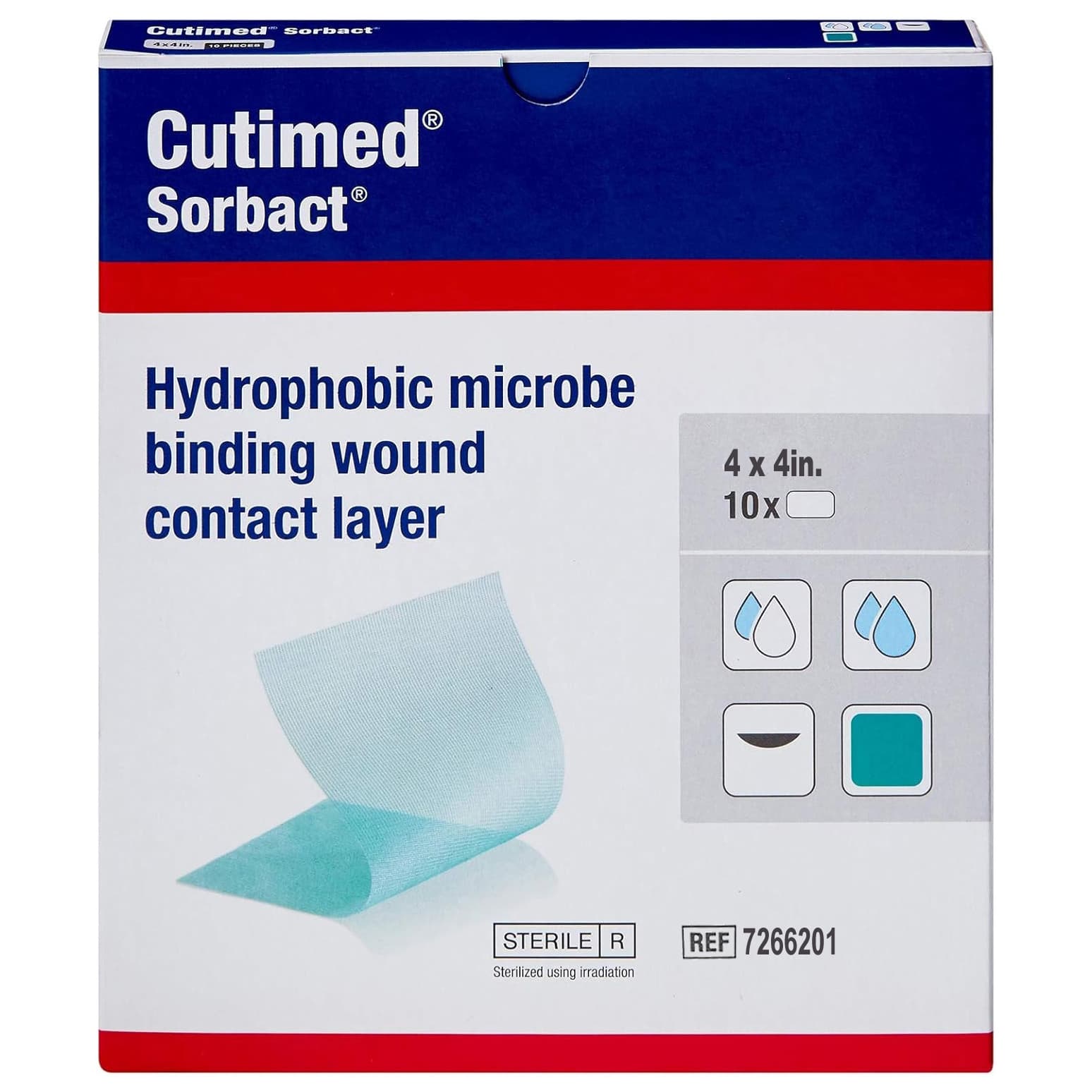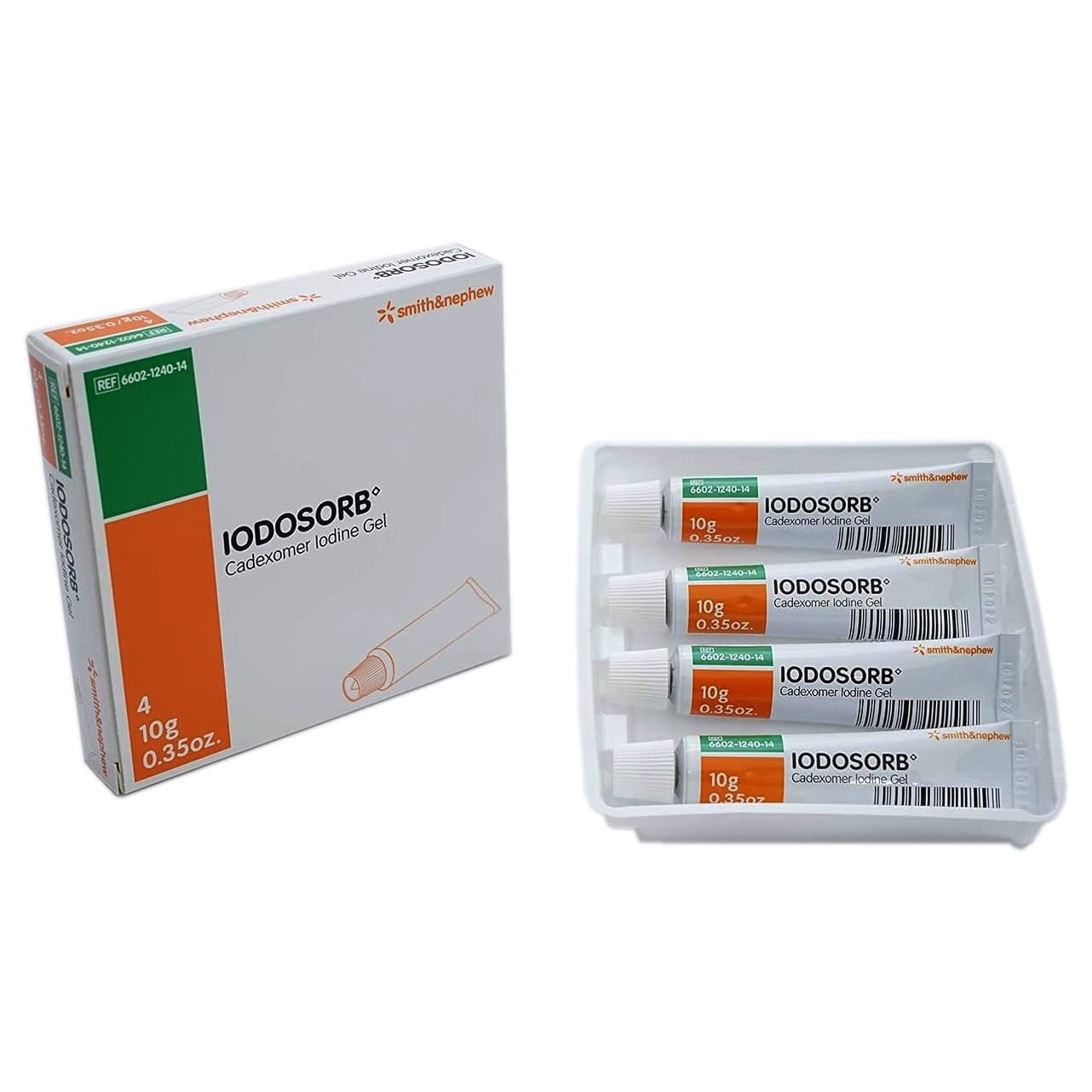









Starts From
Description
Cutimed Sorbact Wound Contact Layer is a hydrophobic wound dressing that binds bacteria using Sorbact Technology. The green contact layer allows wound exudate to pass through to a secondary dressing and build a non-adherent interface between the wound and the absorbent secondary dressing. This dressing supports wound healing by effectively managing moisture
Features & Benefits:
- For use in infection dressings, reduce bioburden and support effective wound healing, with no known contraindications and low risk of allergy
- Dressings inhibit the growth of most common resistant pathogens
- Safe removal dressings irreversibly bind and remove hydrophobic bacteria without releasing active agents in the wound
- Dressings can be cut to any size or shape, suitable for many wound types
- Dressing can be used on both superficial and deep wounds
- Both side application
- Secondary dressing needed
Indications: Management of exudating partial- to full-thickness wounds
- Postoperative wounds
- Traumatic wounds
- Shallow cavity wounds
- Pressure injuries
- Diabetic foot ulcers
- Venous leg ulcers
Directions for use:
- Prepare the wound and surrounding skin according to local clinical protocols
- Choose an appropriate dressing size, overlapping wound margins if necessary
- Remove the dressing from the pouch using aseptic technique
- When cutting the dressing, use an aseptic technique and discard any open, unused portions
- Ensure direct contact with the wound surface for effective hydrophobic binding of microorganisms
- To line or fill a cavity wound, gently unfold and fluff one or more dressings to avoid dense packing
- Apply the appropriate secondary dressing
- Change the dressing according to exudate levels and wound condition. If clinically appropriate, the dressing may remain in place for up to 7 days
How to remove: If the dressing adheres to the wound, moisten or soak it to facilitate removal and prevent disruption of healing tissue.
Warranty
- The product warranty is applicable as per the terms and conditions provided by the product manufacturer.
Please call us for specific details.
Return
- No returns will be accepted after 30 days from the date of shipment.
- All returns are subject to a restocking fee as per manufacturers terms and conditions.
- All returns must have an RGA number (Returned Goods Authorization), unauthorized returns will not be accepted.
- We do not guarantee fulfillment of any desired purpose or product suitability to the user and this will not be considered as a valid reason for return.
- The products must be new, unused condition, not tampered with, in original packaging and returned at the customers expense in the original packaging.
- If your return is not due to any manufacturing defect then the original shipping cost will be deducted from the total refund.
- Hygiene, bath and toilet items cannot be returned once opened or used.
- Standard manufacturer terms and conditions apply for return policy of this product.
Please call us for specific details.
Description
Cutimed Sorbact Wound Contact Layer is a hydrophobic wound dressing that binds bacteria using Sorbact Technology. The green contact layer allows wound exudate to pass through to a secondary dressing and build a non-adherent interface between the wound and the absorbent secondary dressing. This dressing supports wound healing by effectively managing moisture
Features & Benefits:
- For use in infection dressings, reduce bioburden and support effective wound healing, with no known contraindications and low risk of allergy
- Dressings inhibit the growth of most common resistant pathogens
- Safe removal dressings irreversibly bind and remove hydrophobic bacteria without releasing active agents in the wound
- Dressings can be cut to any size or shape, suitable for many wound types
- Dressing can be used on both superficial and deep wounds
- Both side application
- Secondary dressing needed
Indications: Management of exudating partial- to full-thickness wounds
- Postoperative wounds
- Traumatic wounds
- Shallow cavity wounds
- Pressure injuries
- Diabetic foot ulcers
- Venous leg ulcers
Directions for use:
- Prepare the wound and surrounding skin according to local clinical protocols
- Choose an appropriate dressing size, overlapping wound margins if necessary
- Remove the dressing from the pouch using aseptic technique
- When cutting the dressing, use an aseptic technique and discard any open, unused portions
- Ensure direct contact with the wound surface for effective hydrophobic binding of microorganisms
- To line or fill a cavity wound, gently unfold and fluff one or more dressings to avoid dense packing
- Apply the appropriate secondary dressing
- Change the dressing according to exudate levels and wound condition. If clinically appropriate, the dressing may remain in place for up to 7 days
How to remove: If the dressing adheres to the wound, moisten or soak it to facilitate removal and prevent disruption of healing tissue.
Warranty
- The product warranty is applicable as per the terms and conditions provided by the product manufacturer.
Please call us for specific details.
Return
- No returns will be accepted after 30 days from the date of shipment.
- All returns are subject to a restocking fee as per manufacturers terms and conditions.
- All returns must have an RGA number (Returned Goods Authorization), unauthorized returns will not be accepted.
- We do not guarantee fulfillment of any desired purpose or product suitability to the user and this will not be considered as a valid reason for return.
- The products must be new, unused condition, not tampered with, in original packaging and returned at the customers expense in the original packaging.
- If your return is not due to any manufacturing defect then the original shipping cost will be deducted from the total refund.
- Hygiene, bath and toilet items cannot be returned once opened or used.
- Standard manufacturer terms and conditions apply for return policy of this product.
Please call us for specific details.
Starts From














